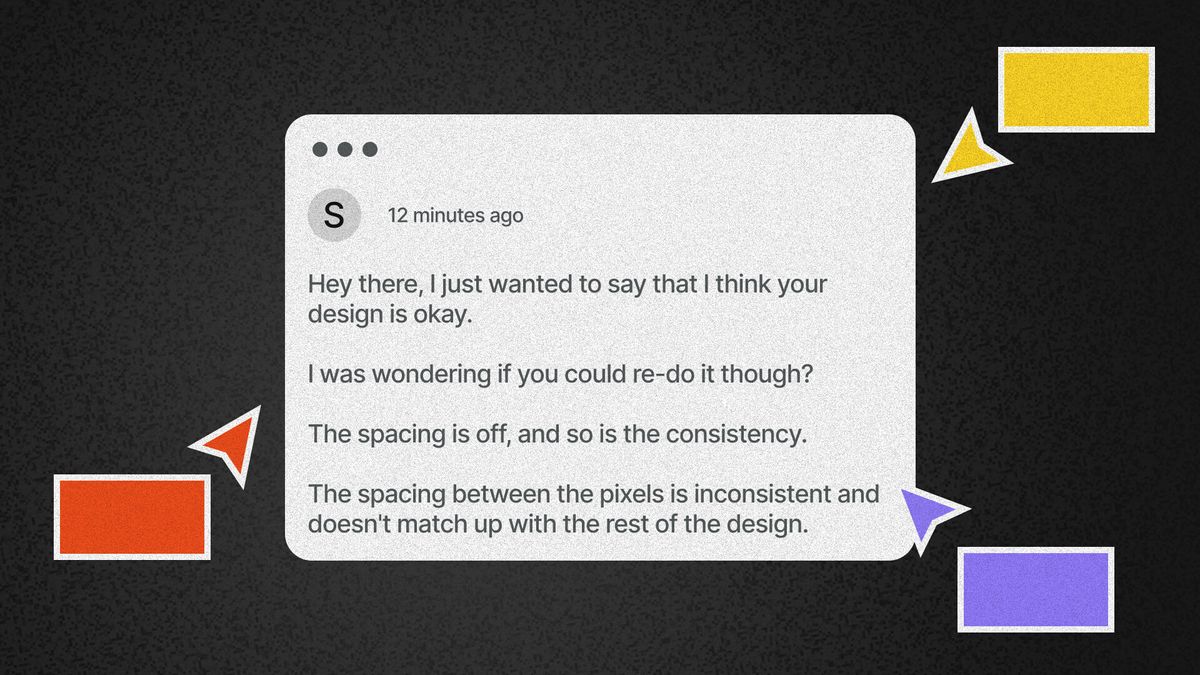Afraid of negative feedback for your design work? Try this instead
Learn how to navigate negative feedback or mitigate it completely with this one strategy

You open up your Figma file to view the red blip on the comments icon.
You click on it to scan through the right side panel where your design manager has left a long list of criticisms.
It starts to resemble a drive-by shooting more than a design review. The comments feel like bullets piercing you after all the hard work you put into it.
As you go through each comment, your confidence gradually starts to drain. You think, "My co-workers are going to be looking at this! Why can't this be done on a 1-on-1 basis?".
When we share our hard work we naturally put our ass on the line, and reading through negative comments is going to sting.
But it doesn't have to.
As designers, we go through a phase of maturity where we realize that when we work in UI or UX, we're designing how things should work and look. Everyone will have an opinion about it from customers to design managers.
However, the only way to make something great is to recognize the fact that it might not be great yet.
Your goal is to find the best solution and not to attach your personal identity or self-worth to the work that you shared.
Furthermore, receiving negative feedback doesn't make you a bad designer. Most people are reluctant to share their actual thoughts.
If a customer knows you worked on the designs, for example, they might take the path of least resistance and try to spare your feelings when you test it with them. So it's great if you get negative feedback! It means that you got closer to your goal. That's a win in itself.
And if you're still afraid here's one thing you can do to mitigate getting yourself into drive-by design feedback situation.
Expose your process and get feedback early
When we don't have a lot of confidence in our process we tend to take away our designs, work in private and then go back to showing it to managers when we think we have something solid to show. We do it in secrecy.
Later on when we get more confident about our process we open it up more to feedback because we know that things will never be perfect. Getting feedback becomes exciting and you know that it will steer you to a better design without feeling like you've put your ass on the line.
And if you're worried about asking people for feedback because they might be busy and you're requesting their time and attention, try this:
Make a short 3-5 minute loom video of your design in progress.
Make sure to include these details in the video:
- Explain the motivation behind the design by contextualising the problem and what you're trying to accomplish.
- Explain how your design addresses those problems.
- Mention any weak spots or details that you're not sure about.
- Invite your manager and other stakeholders to comment on it. Seek out a variety of perspectives.
When you do this from the beginning you take a lot of pressure off the review process for both you and your manager. The feedback comes in smaller baby waves rather than one big tidal wave wiping your creative energy out.
It starts to feel much less like a review by the end of it since there's smaller increments of progress.
As mentioned, it doesn't make you a bad designer to receive a lot feedback (even if it's negative). However, it does make you a bad designer when you don't incorporate it into your process.
So, when it's time to share and evaluate what you've done, try to put your emotions aside when sharing for feedback. If you're able to do this, you'll be able to argue ideas logically rather than emotionally.
If you liked reading this article you might also like, How to Design Your Own Component Library Without Spending $$$ on Courses and How do you break into a UI/UX design role even during a layoff period?





